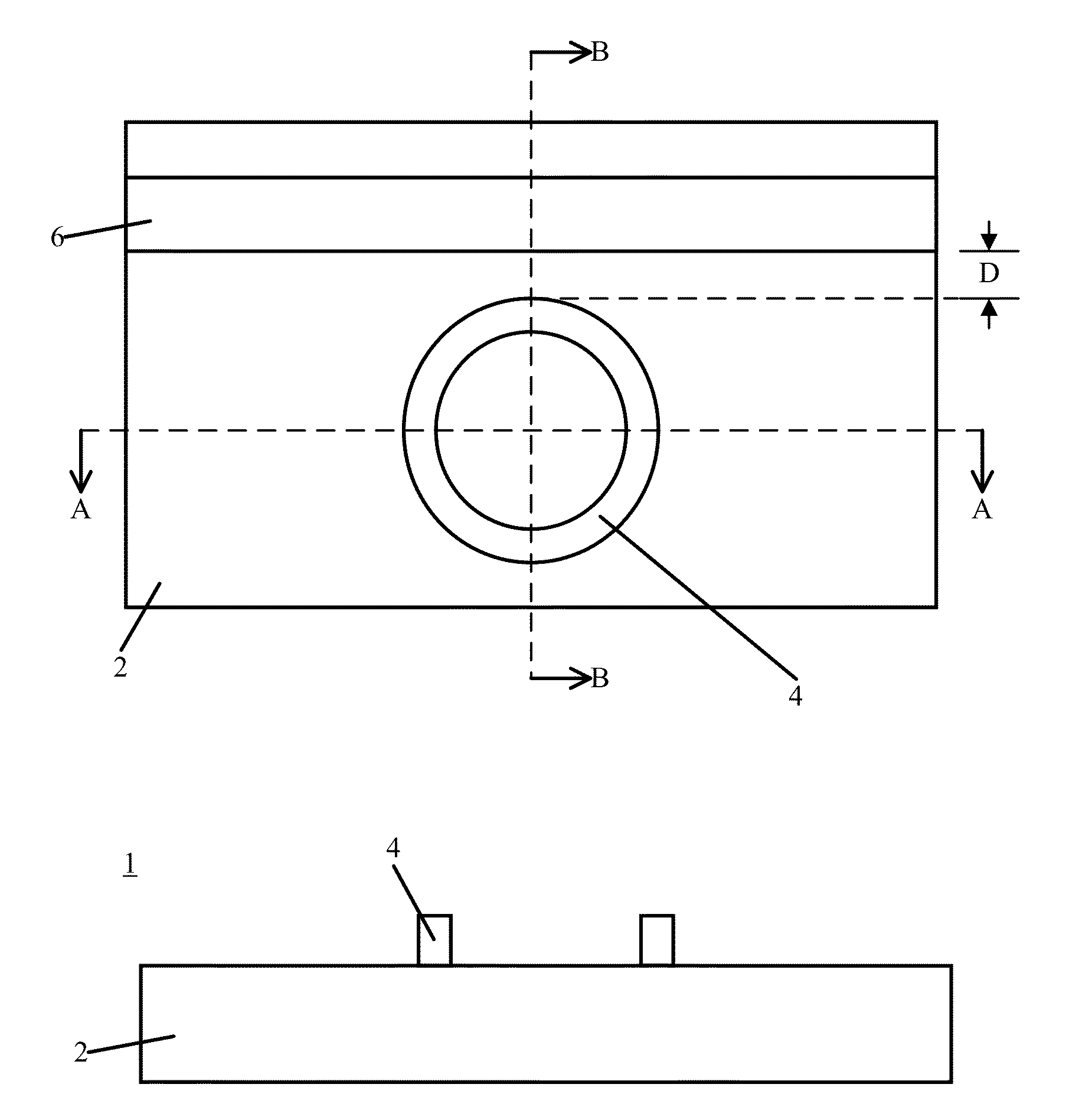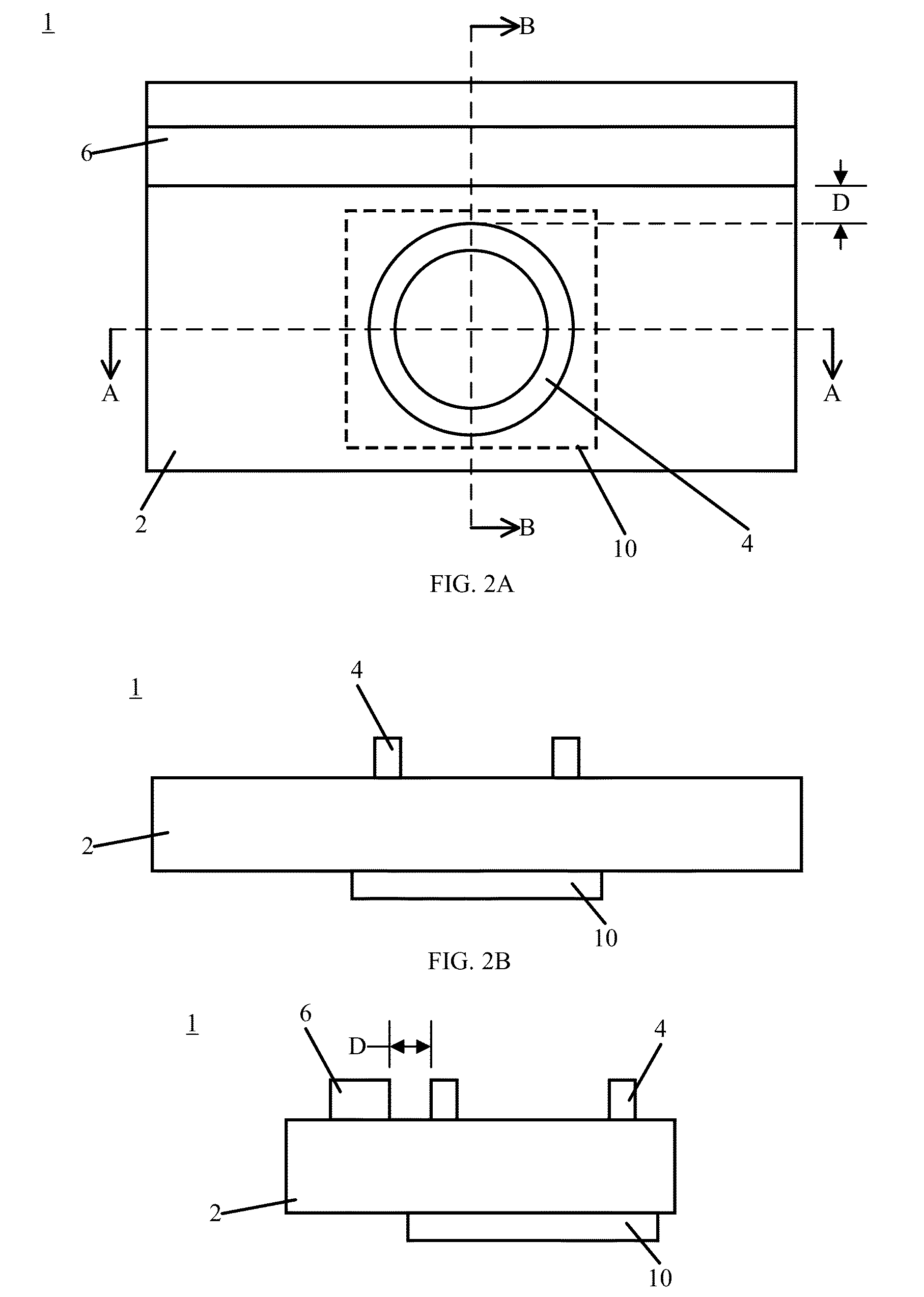Optical temperature sensor and use of same
- Summary
- Abstract
- Description
- Claims
- Application Information
AI Technical Summary
Benefits of technology
Problems solved by technology
Method used
Image
Examples
example 1
[0089]A thermometer was fabricated using CMOS techniques on a silicon on insulator (SOI) wafer with a 220 nm thick layer of silicon on top of a 2 μm thick buried oxide layer that isolates an optical mode and prevents loss to the substrate. The fabrication of silicon devices was performed through microfabrication and nanofabrication. Masks were made using ultraviolet light at 193 nm for photolithography and were etched to from a waveguide and Bragg coupler. The Bragg coupler provided free space coupling of light in or out of the thermometer at, e.g., 4 dB per Bragg coupler. The thermometer was subjected to thermal oxidation to form a 10 nm thick SiO2 layer thereon to reduce a surface roughness.
[0090]FIG. 19 shows a micrograph of the thermometer 248 that included ring resonator 254 and waveguide 252. The micrograph was acquired a scanning electron microscope. Ring resonator 254 had 10 μm radius and was separated from waveguide 252 by 130 nm. The thermometer had a free spect...
example 2
Temperature Response of Thermometer
[0091]The thermometer from Example 1 was subjected to thermal response testing. A tunable laser provided input light to the ring resonator. A portion of the input light was picked up from the laser output for wavelength monitoring while the balance of the input light, after passing through the thermometer, was detected by a power meter. The thermometer was mounted on a two-axis stage in a two-stage temperature-controlled enclosure. Input from a platinum resistance thermometer from each stage was fed to an input channel of a proportional-integral-derivative controller that drove a thermoelectric cooler. The first stage minimizes global temperature fluctuations inside the enclosure to ±1 K, and the second stage minimized temperature variations at the thermometer to less than 17 mK over 24 hours. A relative humidity (% RH) inside the enclosure was monitored by a humidity meter. Relative humidity levels were changed inside the enclosure by varying a fl...
PUM
 Login to View More
Login to View More Abstract
Description
Claims
Application Information
 Login to View More
Login to View More - R&D
- Intellectual Property
- Life Sciences
- Materials
- Tech Scout
- Unparalleled Data Quality
- Higher Quality Content
- 60% Fewer Hallucinations
Browse by: Latest US Patents, China's latest patents, Technical Efficacy Thesaurus, Application Domain, Technology Topic, Popular Technical Reports.
© 2025 PatSnap. All rights reserved.Legal|Privacy policy|Modern Slavery Act Transparency Statement|Sitemap|About US| Contact US: help@patsnap.com



